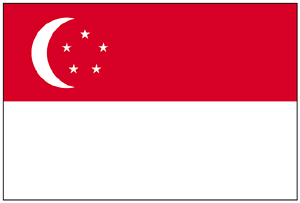 Singapore
Singapore
 Singapore
Singapore
Basically the Singapore education system makes English language as the country's official language, and it is widely used in all subjects excluding Mother Tongues (which can be Tamil, Chinese or Malay). Generally, the students in Singapore are English educated. I'm a junior college student now. In high school, my English teacher basically strengthened our Grammar (nouns, pronouns, verbs, adverbs, adjectives, punctuation, tenses, etc). The teacher made sure that we understood the basic rules of English. For instance, the subject-verb agreement, when to use the past/present/past-perfect/present-prefect tense.
During first two years, we were required to write book reviews which were to be handed up to our teacher on a monthly basis. A booklist will be given to us and it is compulsory for us to limit our scope on the selected books written by authors such as Alfred Hitchcock, Jane Austen, Amy Tan, etc. The objective is to encourage us to read. Every student was also required to subscribe to magazines like Asiaweek or Newsweek to improve our writing skills. Occasionally, we will have debate on current affairs which can be on education or social issues. This is to enhance our oral presentation and to train our public speaking skills. Personally, I feel that the most effective way to teach students English is to make the lessons interesting. [Gynn Tan Wanjing]

You might get more information on Singapore from the following sites: Ministry of Education
Ministry of Education National Institute of Education
National Institute of Education Education Systems of SEAMEO Member Countries
Education Systems of SEAMEO Member Countries
 Taiwan
Taiwan
Students begin to learn English at junior high school and continue at junior college. The emphasis is on written English and passing exams, however this is slowly changing and students are being encouraged to develop their oral skills to the extent that many junior colleges will now employ several native speakers who concentrate on communication skills. (These teachers require a master's but not necessarily in TEFL/TESOL.)
In addition to this, many children attend "bushibans" - cram schools - after school and on weekends, with wealthier parents often paying for private home tutoring. Opportunities for native speakers are good (with a bachelor's degree) although unfortunately non-native speakers run into difficulties obtaining resident/work visas. [Jenny Barrett]

You might get more information on Taiwan from the following site: Information on Taiwan
Information on Taiwan
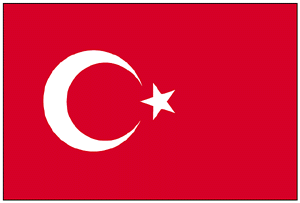 Turkey
TurkeyGenerally private schools are very good at language education. In these schools, after primary education which takes 5 years, students attend the prep classes for only English lessons. After prep, all lessons are in English, I mean mathematics, physics, etc. But this is not obligatory any more because students confront some terminology problems when they take the university exam which is in Turkish. [M.Fethullah Erdogan: Istanbul]

You might get more information on Turkey from the following site: Turkey at a Glance
Turkey at a Glance
 Jersey Channel Islands
Jersey Channel IslandsLearning English here is pretty well by the immersion method since there are few, if any teachers, who are specialists in this field. However, the majority of our immigrants are Portuguese, and the Portuguese government pays for five of their teachers to come and work with us as well as giving lessons on Portuguese life, language and culture in sessions after the school day has finished.
During the school day, the Portuguese teachers support lessons on the Jersey Curriculum so that the Portuguese children may have better access to the various subjects.
In my school (an 11-16 secondary school in town) 1 in every 3 students is a foreign national. There are two of us employed to teach non-speakers of English. In general, one teaches ESOL and the other supports teachers of other subjects whose lessons must, of course, be carefully differentiated.[Mary]
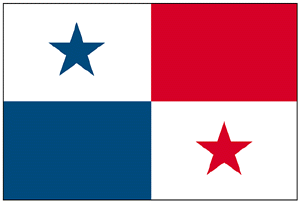 Panama
Panama
The TEFL situation in Panama is very similar to Japan. The Ministry of Education has now realized that the English teaching situation in Panama is not good because when students get into the college level, they aren't capable of neither speaking nor writing in English. Students receive 6 years of English class from junior to senior high school and they cannot speak, write, understand a conversation in English, etc.
There isn't any entrance exam to pass from one level to the other. Students only need to obtain an acceptable grade of 3.0 in all the subjects to pass the next level. They are required to complete 4 hours per week from junior to senior level. However, if the school is of commerce, and depending on the programme, students can study subjects in English such as Typing, Computer Science, Regular English for Commerce, Shorthand in English and Accounting in English.
Most of the English teachers teach English in Spanish because they think students cannot understand anything they say in English. They evaluate writing and reading skills most of the time. Science schools base their evaluations on readings and translations about the topic students are studying.
Private education is different. Students are required to study 20 hours per week. They study English from preschool to senior high, where they study from 15 to 21 subjects and 10 subjects are taught in English. As a result, there are big differences between public education and private education. So when students from public schools go to find jobs, they are not qualified because of the English language.
Since 1999, the Ministry of Education has changed the School Programme each year to improve the quality of our education, especially the teaching of the English language. I'm taking this programme. We (the members) meet several times a year to receive training from an English expert who comes to Panama to teach us the way to teach English in our classroom and how to teach English through our Panamanian reality. [Anack]

You might get more information on Panama from the following site: The International School of Panama
The International School of Panama
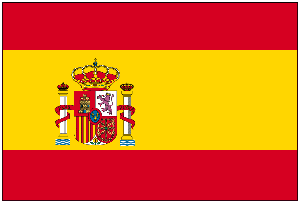 Spain
SpainAs in most of the countries, there are a lot of private centers which teach English after the school hours, and many of the students go there mainly to improve speaking skills.
In many Spanish autonomous communities, linguistical subjects take up most of the curriculum hours. In my community, Galicia, and in the first year of a new level called E.S.O. (Obligatory Secondary Teaching), in which the students from 12 to 16 are included, there are 4 hours a week of Galician (our national language, a variety of Portuguese), 4 of Spanish, 3 of English and 2 for another optative subject, that often is French. The same must be happening in the Basque Country or in the Catalonian-speaking communities.
This level (ESO), included in the 'Reforma', planned by the previous government, is having a lot of trouble in its first development, due to the money cuts of the current conservative government on public services. [Miguel R. Carnota: Pontedeume, Galicia]

You might get more information on Spain from the following sites: The Information Database on Education Systems in Europe - Spain
The Information Database on Education Systems in Europe - Spain TESOL-Spain
TESOL-Spain
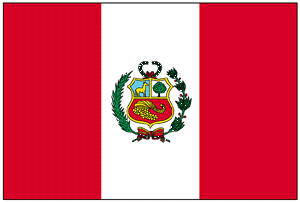 Peru
Peru
You might get more information on Peru from the following site: The American School of Lima
The American School of Lima
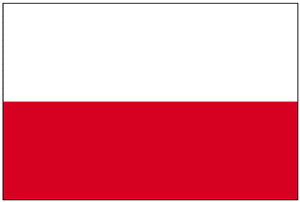 Poland
PolandIn high school most students study German or English, at some schools both. A lack of qualified teachers of English and the very poor pay that teachers receive here in public schools means that from city to city and from school to school the amount and quality of ELT varies greatly. Where I'm teaching classes has either two or four hours of English per week, for four years. The aim is to bring students to a pre-intermediate level at the end of studies.
I'm working here, along with about 40 or 50 other Canadians, as part of a foreign aid project to help Poland develop an ELT base. There is no firmly established curriculum, so schools make their own decisions about what books and methods to use in teaching. I've tried a few different popular ESL texts, including The New Cambridge English Course and Headway. [Thomas Topham: Myslenice]

You might get more information on Poland from the following sites:
 The Information Database on Education Systems in Europe - Poland
The Information Database on Education Systems in Europe - Poland Szczecin City WWW Official Information Service
Szczecin City WWW Official Information Service
 Hong Kong
Hong KongWhen they finish studying in kindergarten, they go to primary school. They learn the English sentence structure, grammar, verb table.... During their lessons, teachers use their mother language to teach English. Children can speak simple sentences at that time. After finishing primary school, they go to secondary school at the age of 12. We try to write English compositions at about 200 words. We have 8-10 English lessons per week. Each lesson lasts for 40 minutes.
Though most of us have learned English for more than 10 years, our English is not very good as foreigners. It is because we have less time to practise our English. Some students are afraid of speaking English because they fear that they would make mistakes. [Rita Fung]
I would like to add some more details to what Miss Rita Fung has said. The overall standard of English among Hong Kong students is not satisfactory and their weakest area is speaking. However, there are great variations among students of different classes and schools. A small number of secondary students have excellent proficiency in the English language while some of them can't even remember the 26 alphabets! Besides, some kids who go to kindergartens with native English speaking teachers master the language very well.[Ezekiel Pang]
Most of the subjects in Hong Kong secondary schools have been taught in English because the city was a British colony. In July 1997 Hong Kong has become the Special Administrative Region of China. The government has decided that the medium of instruction of secondary schools will be switched to Chinese in 1998 (This policy will be adopted at first in Secondary One). Chinese is the mother tongue of most local students. In order to enhance (maintain?) students' standard of English, the government will allocate fundings for schools to employ one to two extra English (native speaking) teachers to teach the foreign language. [Ezekiel Pang]

You might get more information on Hong Kong from the following sites: Education Department
Education Department Hong Kong's Education System
Hong Kong's Education System The Hong Kong Institute of Education
The Hong Kong Institute of Education
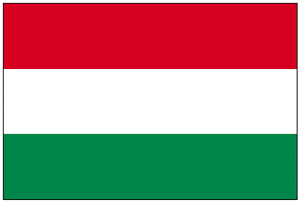 Hungary
HungaryThere is also a shortage of professional English teachers in Hungary. There used to be lots of Russian teachers, but as now no one cares about Russian, many of the former Russian teachers are retrained in special programmes to teach English in secondary schools.
Hungarian teachers of English feel more confident of the teaching style the grammar translation method represents. Students are taught many unnecessary explicit rules. Fortunately, things seem to be changing these years. More and more teachers are trained and taught to apply new methodologies, concentrating more on language as a means of communication rather than just rules. Also, many native speakers come from GB and the US and teach many classes one additional hour a week. [Kultsar Zoltan]

You might get more information on Hungary from the following site: Education in Hungary 1996
Education in Hungary 1996
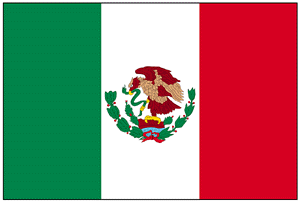 Mexico
Mexico
I teach English at a private school in Mexico City. Here there are big differences in teaching English as
a foreign language because, even if we are close to U.S.A and we are used to listening to a lot of words in English, our students in general do not want to learn it. Public schools teach English three hours a week,
usually in big groups where it does not matter what students learned in the previous lesson and besides this, sometimes teachers do not speak English. On the other hand, private schools do not have the same rules. This means that they teach what they decide to teach without a pattern. The school where I work teaches English five hours a week and the groups are divided according to students' level. In fact, we are innovating this system; we have to improve it but it is working well nowadays. [Maria del Pilar Martinez]

You might get more information on Mexico from the following site: The Mexican Education System
The Mexican Education System
 Malaysia
MalaysiaIn the primary level, ESL is taught as early as in Year 1. Some pupils who have been to the private kindergarten (not by the government) do learn ESL then. By Year 6 they have to sit a government exam but they are not required to pass the subject to be promoted to secondary schools. It is similar in the secondary level. By Form 3 of the secondary level they have to sit another public exam but they do not have to pass the subject. Then again in Form 5 it is the same.
Due to this, the standard of ESL has somewhat deteriorated. This is the view of many teachers and scholars. But the Ministry of Education has put in a lot of effort in trying to push the standard up again. There are pupils who can speak English better than most European or Japanese, Korean, South American pupils of their age.
The government has also allowed teachers in schools and colleges to use the language to teach other subjects. This is a move to improve the low standard of ESL proficiency among the pupils, especially those in the rural areas. These pupils naturally do not see the importance of ESL at present in their own surroundings. They often use their mother tongue - Malay/Bahasa Melayu, Mandarine, Cantonese, Kadazan language, Iban language or Tamil. [Mohd Marzuki Maulud: Malacca]

You might get more information on Malaysia from the following sites: Education Systems & Development
Education Systems & Development Education Systems of SEAMEO Member Countries
Education Systems of SEAMEO Member Countries
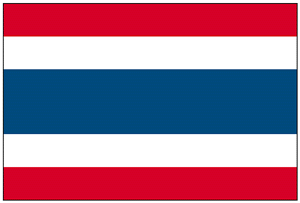 Thailand
ThailandOn three days per week (nine classes in all) I take three classes from the three senior levels in the 16-18 age groups. The basic philosophy is through conversation to improve their comprehension and ability to speak English. Thai people are very shy and embarrassed to speak English, so I try to overcome this shyness and self-consciousness and encourage them to speak to me and converse amongst themselves.
The nine classes that I take have an average of 24 boys which is a little too many for conversational purposes but we get along okay and the boys are usually very keen to improve their English in readiness for going to university or going abroad to further their studies. They actually start learning English at the age of eight, but they are taught grammar and vocabulary by Thai teachers and they appreciate the opportunity to practice their English conversation and diction with a native English-speaking person.
Of 100 or so teachers at Vajiravudh College, about 7 or 8 teach English - the others are teaching French, Thai, maths, history, etc. The Thai teachers mostly teach English grammar and vocabulary both at primary and secondary levels. As far as I know, they use standard English teaching books such as those published by the Oxford University Press. Conversation is not taught as a distinct subject at Vajiravudh College - to be very honest, the speaking ability of the Thai English teachers is rather limited and they have asked me to also give them (the teachers) English conversation instruction and practice.
I would say only two or perhaps three schools are under Royal patronage. All other schools in Thailand are either state (government) schools, or particularly in Bangkok and the major towns and cities, private fee-paying schools. The standard of English teaching is, on the whole, rather poor mainly because most schools simply cannot afford to hire native English speakers to teach. On average I would think that Thai teachers spend about 15 hours actually teaching English per week. [Maurice J. Bowra: Bangkok]
In Thailand, students start to learn English in primary school (Prathomsuksa 5, about 11 years old). Primary school has 6 levels: Prathomsuksa 1-6. After that they will learn English for 6 years in secondary school. It has six levels, too - Mathayomsuksa 1-3 or lower secondary and Mathayomsuksa 4-6 or upper secondary.
Our English curriculum is based on communicative teaching approach and child-centred approach. Most activites are taught with a lot of emphasis on various techniques: games, problem solving, role play, etc. Most students in Thailand learn English for their university entrance which focuses on reading comprehension (about 50 % of the test). So they don't have much success in learning this subject. They know the rules very well, but they can't communicate well. Moreover, students don't have much chance to use English in the real situation. However, English is very important in every level of learning. [Ekkarin Sungtong]

You might get more information on Thailand from the following sites: Ministry of Education
Ministry of Education Education Systems of SEAMEO Member Countries
Education Systems of SEAMEO Member Countries
 Italy
ItalyAfter passing a test at the end of the 5th year of Elementary School, children go on to secondary schools (Scuola Media) from 11 to 14 years old. At this stage, students can learn either English or French or German (or two of them in Scuole Sperimentali). Post secondary schools (most of them last 5 years) are not compulsory. Here the FL can be English, French or German. The number of languages and hours of teaching a week depends on the different kind of school, but the average number is 3 hours a week for each FL. Generally, the emphasis is on grammar and reading comprehension, not on communicative skills. As a consequence, at the end of 8 years of FL, fluency is still very poor.
Of course, state language schools place a greater emphasis on the spoken language. In these schools there are up to 5 hours a week for each language and students have at least one hour lesson a week with a mother tongue teacher. For those students who like to improve their oral skills, there are a lot of private institutes which teach English alone. [Claudia Vecchi: Ravenna]

You might get more information on Italy from the following sites: The Information Database on Education Systems in Europe - Italy
The Information Database on Education Systems in Europe - Italy ESTIA in Italy - Education
ESTIA in Italy - Education
 China
ChinaMost students study English not for the purpose of mastering communication skills, but for preparing examinations to be taken at different levels. There are too many examinations in Chinese schools, the most important of which is the national College Entrance Examination. All the teaching activities thus are examination-oriented and the methods are basically traditional with grammar and translation emphasized.
Textbooks are the same throughout the country and teachers are not free to choose their own textbooks. Students are graded and evaluated only according to their examination scores. As a result, most students cannot understand spoken English well, let alone talking with foreign visitors even if they score high in examinations. [Jiangming Xu: East China Shipbuilding Institute, Zhenjiang City, Jiangsu Province]

You might get more information on China from the following sites: China General Information - Education
China General Information - Education Education in China
Education in China
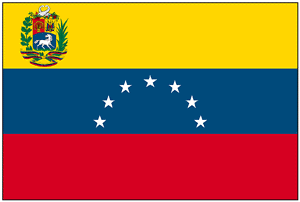 Venezuela
VenezuelaFirst of all, you might have heard that the educational system here is in crisis, as is the economic, political system, etc. English teaching is obligatory from 7th grade onwards (12 year olds), officially, 3 or 4 hours a week. It is very difficult to find well-trained teachers, who not only have knowledge of methodology and pedagogy, but also have enough fluency in the language. Classes in public schools tend to be numerous (sometimes 40-50 students), which obviously makes it a tremendous effort to use communicative methods, and many teachers opt for a more traditional grammatical emphasis. Teaching materials are scarce in the public sector and textbooks old fashioned and out of date. At the end of high school, the results tend to be disastrous and of a very low standard.
As far as my private school is concerned, we have a different story to tell, primarily because one of our priorities is to teach English, and being a school with a middle, upper middle class population, we have the resources to offer better training. We still have difficulty in finding good teachers. We would say it is like finding a needle in a haystack, and even more so as the level of fluency of our students has risen considerably over the years.
Our kids begin English at the age of 3 and have classes through primary school. From 7th grade onwards they have 8 hours a week, in groups of 15 students, which enables more individual attention.
We have also had a sort of exchange program, having invited American teachers on two occasions, to spend a year in Venezuela for mutual benefit - he or she comes to learn a new culture and language and teaches in the school, giving our kids the opportunity to have a class with a native speaker.
As you can see, Venezuelan experiences in EFL can be completely different and reflect the image that there are two countries in one, which is what happens on a social and economic level too. [Rosalind Roystone: Valencia]

You might get more information on Venezuela from the following sites: Education
Education Educational System in Venezuela
Educational System in Venezuela
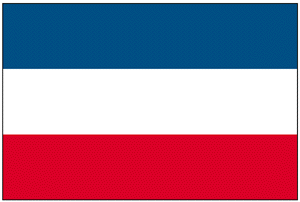 Yugoslavia
YugoslaviaAll those schools are state schools, supposedly free of charge, although it costs an arm and a leg to put a child through school. There are no private schools in Yugoslavia (except language schools whose diplomas may or may not be recognized elsewhere, depending on the school, of course, and its connections with foreign educational institutions).
There are three types of secondary schools. Training schools for those who'd like to get a job quickly (they train students for technician class jobs). Gymnasiums, for those who plan to continue their education at university level. Special schools for gifted children (music, language, mathematics). The gymnasiums themselves are divided into three types: those focusing on the humanities, those paying attention to hard sciences and the general ones. The first trains the future university students in soft sciences; the second in hard sciences, and the third for both.
The pupils start studying a foreign language already in elementary school (at the age of 10). At the age of 11 they start with the second foreign language. When they get to the secondary school level, they continue studying the languages they had started in elementary school.
The students of each of the three types of gymnasium study two foreign languages (with the gymnasium students studying Latin as well). Depending on the type of school and the choice of language by the students themselves, they have between 2 and 4 class hours of language training a week.
If a student takes English (or French, Russian, German, Italian) as his first foreign language, and some other foreign language as his second foreign language, he will have more class hours a week in his first language than in his second language. The students of the special language school (there is only one in Belgrade) have curricula that are specially designed to give them as much language instruction as they can take.
As for the number of students per class, the situation is almost unbearable. Teachers have to face between 33 students in a class (which is according to the regulations and almost never happens) and 40 to 50 (which is not according to the regulations, but a hard fact of life).
The quality of language teaching is fairly good. Teacher training, particularly English language teachers' training, is pretty good (see the ESSE report on former Yugoslavia).
English is also taught in many private language schools. Also, in Belgrade and Nis, they have at their disposal an inexpensive, ubiquitous, English by phone service. In the end, I should say that the students are exposed to a lot of English through movies, music tapes, cassettes, CDs, books, TV, computers, Internet, and sports. [Mladen Jovanovic: Belgrade]

You might get more information on Yugoslavia from the following site: University of Belgrade
University of Belgrade
 An overview of the TEFL situation in various countries (continued)
An overview of the TEFL situation in various countries (continued)